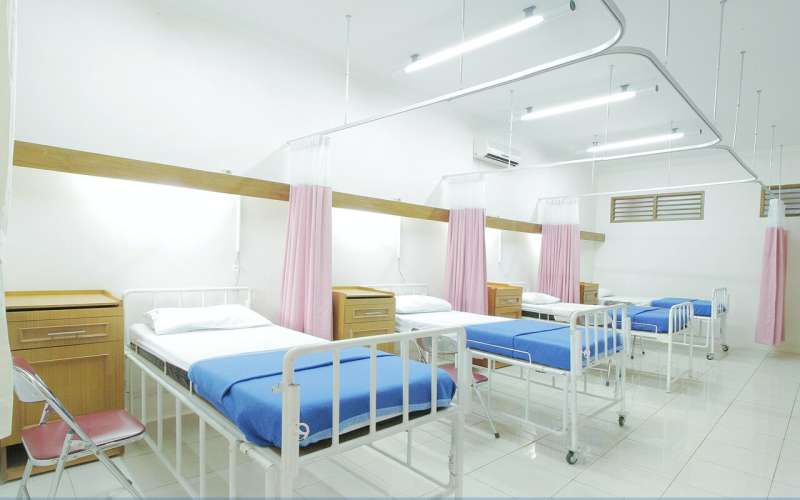This article has been reviewed according to Science X's editorial process and policies. Editors have highlighted the following attributes while ensuring the content's credibility:
fact-checked
proofread
Over 250,000 COVID-19-related hospitalizations recorded across 2021-2022 in Australia

There were 11.6 million public and private hospital admissions in 2021–22, a 2.1% decrease from the previous year. This followed a 6.3% increase from 2019–20 to 2020–21 and a 2.8% decrease from 2018–19 to 2019–20.
The latest MyHospitals update from the Australian Institute of Health and Welfare (AIHW) shows how the trend in hospital admissions has fluctuated throughout the pandemic, and includes national, state and territory, and hospital-specific data.
"Prior to the pandemic, hospitalizations increased by an average of 3.3% per year between 2014–15 and 2018–19. However, the peak of the pandemic has thrown the steady growth trend off balance," said AIHW spokesperson Dr. Adrian Webster (Ph.D.).
Overall, there were 7.3 million (63%) same-day hospitalizations and 4.3 million (37%) overnight hospitalizations in 2021–22. This equates to a 2.0% and 2.2% decrease, respectively from the previous year.
The average length of stay for overnight hospitalizations in public hospitals increased by 7.1% (5.48 to 5.87 days), while private hospitals increased by 1.4% (5.11 to 5.19 days).
"The changes to average length of stay likely relates to restrictions on certain activities. For example, emergency admissions tend to have longer lengths of stay than admissions for elective procedures so restrictions on elective surgery numbers may have inadvertently increased the average length of stay,"
"In general public and private hospitals tend to provide different types of care," said Dr. Webster.
The majority of hospitalizations for certain infectious and parasitic diseases (for example, gastroenteritis and colitis) and conditions in the perinatal period (for example, short gestation and low birthweight) were provided in public hospitals (87% and 85%, respectively).
Whereas, the majority of hospitalizations for treating diseases of the eye (for example, cataract) and musculoskeletal system (for example, arthritis of the knee) were provided in private hospitals (75% and 71%, respectively).
People aged 65 and over make up 17% of the Australian population, but accounted for 43% of hospitalizations and 49% of patient days.
The report also contains information on the number of hospitalizations involving a COVID-19 diagnosis, showing a significant increase from 4,700 in 2020–21 to 263,400 in 2021–22.
"While there has been a substantial increase in the number of hospitalizations involving a COVID-19 diagnosis, this does not necessarily reflect the severity of the illness; it could be related to the widespread nature of COVID-19. In many cases patients are admitted with COVID-19, not necessarily because of COVID-19," said Dr. Webster.
Of the 263,400 hospitalizations involving a COVID-19 diagnosis, 3% involved a stay in the intensive care unit (ICU), 1.3% required ventilation and 2% of patients died in hospital.
Around 1 in 5 (19%) of the hospitalizations involving a COVID-19 diagnosis recorded one comorbid chronic condition and 9.3% recorded 2 or more.
"The most common comorbid chronic conditions were type 2 diabetes (12%) and cardiovascular disease (11.6%)," said Dr. Webster.
Today, the AIHW also released a report on non-admitted patient care. This includes data on outpatient and diagnostic services that do not require a hospital admission.


















